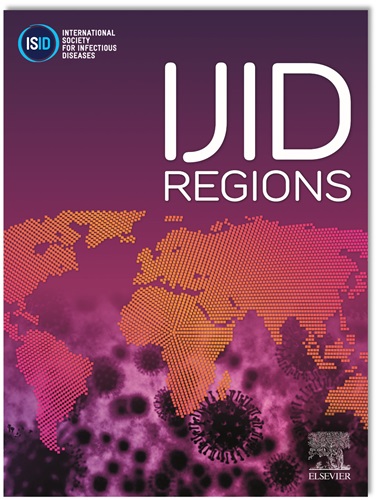Integrating Deep Learning with Computational Methods for Dual Inhibition of Mycobacterium tuberculosis Pantothenate Kinase and CTP Synthetase: A Novel Approach to Combat Multi-Drug Resistance.
IF 4.8
2区 医学
Q1 INFECTIOUS DISEASES
引用次数: 0
Abstract
Introduction
Multi-drug resistance continues to pose an important threat in tuberculosis (TB) treatment, urging the development of innovative therapeutic techniques. Pantothenate kinase (PanK) and CTP synthetase PyrG are enzymes that are essential for Mycobacterium tuberculosis (Mtb) survival. Targeting both simultaneously appears to be a potential method to develop more effective anti-TB treatments. The objective of this study intended to find prospective lead drugs that target both MtPanK and MtPyrG by combining ligand-based pharmacophore modeling, molecular docking, molecular dynamics (MD) simulation, MM-PBSA analysis, and deep learning techniques.
Methods
The HypoGen model generation approach was used to model ligand-based pharmacophores. Pharmacophore validation comprised both internal cost function analysis and external validation with a test set of MtPanK inhibitors. A virtual screening of drug-like molecules from two databases was performed against the best pharmacophore model. Molecular docking was used on selected compounds, followed by MD simulation and MM-PBSA analysis to determine binding stability and affinity. Deep learning techniques were used to refine the pharmacophore model. In vitro investigations validated the tested compounds' antibacterial activity.
Results
The best pharmacophore model (Hypo1) had good predictive power, as validated both internally and externally. Virtual screening identified 87 compounds from DrugBank and Selleckchem, as well as 422 compounds from Otava Chemicals, for docking investigations. Nine of the 509 compounds docked demonstrated promising binding energies. MD simulation validated the complexes' stability, with RMSD, RMSF, and Rg values indicating strong interactions. According to MM-PBSA study, Lead A2 and Lead B4 are the most promising compounds, with high binding affinities to both MtPanK and MtPyrG. In vitro investigations validated the screened compounds' antibacterial activity, indicating their potential as anti-TB drugs.
Discussion
The discovered compounds exhibited favourable interactions with critical residues in the active site of MtPanK and MtPyrG. The use of deep learning algorithms improved the accuracy of the pharmacophore model, resulting in the selection of potent lead compounds. The findings emphasize the lead compound ability to inhibit both enzymes simultaneously, emphasizing their importance in the fight against tuberculosis.
Conclusion
Lead compounds, specifically Lead A2 and Lead B4, have emerged as intriguing candidates for dual inhibition of MtPanK and MtPyrG. Their significant binding affinities, stability, and demonstrated antibacterial activity point to their potential as novel anti-TB drugs. Further validation through in vivo investigations is required to thoroughly investigate their medicinal potential. This study indicates the efficacy of combining deep learning techniques with computational methodologies in TB drug discovery, opening new pathways for battling drug-resistant strains and improving treatment alternatives.
求助全文
约1分钟内获得全文
求助全文
来源期刊
CiteScore
18.90
自引率
2.40%
发文量
1020
审稿时长
30 days
期刊介绍:
International Journal of Infectious Diseases (IJID)
Publisher: International Society for Infectious Diseases
Publication Frequency: Monthly
Type: Peer-reviewed, Open Access
Scope:
Publishes original clinical and laboratory-based research.
Reports clinical trials, reviews, and some case reports.
Focuses on epidemiology, clinical diagnosis, treatment, and control of infectious diseases.
Emphasizes diseases common in under-resourced countries.

 求助内容:
求助内容: 应助结果提醒方式:
应助结果提醒方式:


